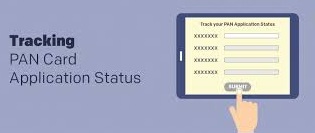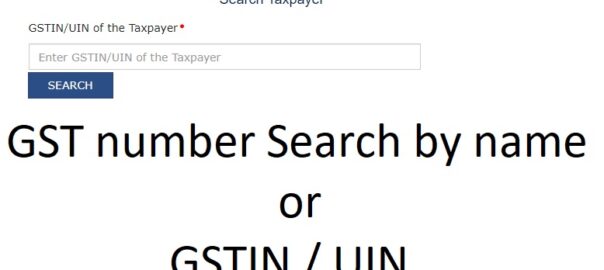Minimum Alternative Tax (MAT)
The concept of MAT was introduced for companies and progressively it has been made applicable to all other taxpayers in the form of AMT. The introduction of the concept of Minimum alternative tax was to take the “zero tax” companies into the taxation bracket. It is payable under the Income-tax Act. According to Section 115JB, every taxpayer or company is eligible to pay income tax. It is applicable for all the public and private companies, including Indian and foreign companies working from India except those who are engaged in infrastructure and power. However, as per provisions MAT shall not apply to any income accruing or arising to a company from life insurance business, shipping income liable to tonnage taxation.
Provisions of MAT
As per the concept of Minimum Alternative Tax (MAT) , the tax liability of a company will be higher of the following:
- Tax liability of the company computed as per the normal provisions of the Income-tax Law, i.e., tax computed on the taxable income of the company by applying the normal tax rate (tax rate 25% plus 4% Edu cess plus surcharge (if applicable) applicable to the company. Tax computed in the above manner can be termed as normal tax liability.
- Tax computed @ 18.5% (plus surcharge and cess as applicable) on book profit (manner of computation of book profit is discussed in later part). The tax computed by applying 18.5% (plus surcharge and cess as applicable) on book profit is called MAT. The tax rate is 15% with effect from AY 2020-21 (FY 2019-20).
Computation of Book Profit
Book profit means the net profit as shown in the profit & loss account for the year as increased and decreased by the following items: Net profit as per statement of profit and loss prepared in accordance with Schedule III to the Companies Act, 2013 Add: Following items (if they are debited to the statement of profit and loss)
- Amounts carried to any reserves by whatever name called (Other than reserve specified under Section 33AC)
- Provisions for unascertained liabilities
- Provisions for losses of subsidiary companies
- Dividends paid/proposed
- Expenditure related to incomes which are exempt
- The amount or amounts of expenditure relatable to, income, being share of the taxpayer in the income of an association of persons or body of individuals, on which no income-tax is payable in accordance with the provisions.
- The amount or amounts of expenditure relatable to income accruing or arising to a taxpayer being a foreign company, from :
- the capital gains arising on transactions in securities; or
- the interest, royalty or fees for technical services chargeable to tax at the rate or rates specified
- if the income-tax payable on the above income is less than the rate of Minimum Alternative Tax (MAT)
- The amount representing notional loss on transfer of a capital asset, being share or a special purpose vehicle to a business trust in exchange of units allotted by that trust or the amount representing notional loss resulting from any change in carrying amount of said units or the amount of loss on transfer of units
- Expenditure relatable to income by way of royalty in respect of patent chargeable to tax
- Amount of depreciation debited to P & L A/c
- Deferred tax and the provision thereof
- Provision for diminution in the value of any asset
- The amount standing in revaluation reserve relating to revalued asset on the retirement or disposal of such an asset if not credited to statement of profit and loss
- The amount of gain on transfer of units computed by taking into account the cost of the shares exchanged with units referred to in the said clause or the carrying amount of the shares at the time of exchange where such shares are carried at a value other than the cost through statement of profit and loss as the case may be.
Less: Following items (if they are credited to the statement of profit and loss)
- Amount withdrawn from any reserve or provision if credited to P&L account
- Incomes that are exempt.
- Amount of depreciation debited to statement of profit and loss (excluding the depreciation on revaluation of assets)
- Amount withdrawn from revaluation reserve and credited to statement of profit and loss to the extent it does not exceed the amount of depreciation on revaluation of assets
- The amount of income, being the share of the taxpayer in the income of an association of persons or body of individuals, on which no income-tax is payable in accordance with the provisions of Act if any such amount is credited to the statement of profit and loss
- The amount of income accruing or arising to a taxpayer being a foreign company, from :
- the capital gains arising on transactions in securities; or
- the interest, royalty or fees for technical services chargeable to tax at the rate or rates specified in Chapter XII if such income is credited to the statement of profit and loss and the income-tax payable on above income is less than the rate of Minimum Alternative Tax (MAT) .
- The amount (if any, credited to the statement of profit and loss) representing
- notional gain on transfer of a capital asset, being share of a special purpose vehicle to a business trust in exchange of units allotted by that trust; or
- notional gain resulting from any change in carrying amount of said units; or
- gain on transfer of units,
- The amount representing notional gain on transfer of units computed by taking into account the cost of the shares exchanged with units referred to in the said clause or the carrying amount of the shares at the time of exchange where such shares are carried at a value other than the cost through statement of profit and loss, as the case may be;
- Income by way of royalty in respect of patent chargeable to tax under section 115BBF Aggregate amount of unabsorbed depreciation and loss brought forward in case of:
- A company and its subsidiary and the subsidiary of such subsidiary, where, the Tribunal, on an application moved by the Central Government under Section 241 of the Companies Act, 2013 has suspended the Board of Directors of such company and has appointed new directors who are nominated by the Central Government under Section 242 of the said Act;
- A company against whom an application for corporate insolvency resolution process has been admitted by the Adjudicating Authority under Section 7 or Section 9 or Section 10 of the Insolvency and Bankruptcy Code, 2016
- Amount of brought forward loss or unabsorbed depreciation, whichever is less as per books of account (in case of a company other than the company undergoing insolvency proceedings)
- Profits of a sick industrial company till its net worth becomes zero/positive
- Deferred tax, if credited to statement of profit and loss.
Treatment of MAT Credit
Companies that pay their MAT (Minimum Alternate Tax) liability without any issues are eligible for MAT credit. This credit allows companies to offset MAT paid over and above the normal tax liability in future years, demonstrating the company’s credibility. The adjustments and carry-forward processes under MAT are governed by Section 115JAA. The tax credit can be carried forward for 15 assessment years immediately following the assessment year in which the credit was first allowed.
Illustration:
- MA Ltd has taxable income of Rs 60 lakhs as per the normal provisions of the Income Tax Act and book profits of Rs 90 lakhs for the FY 2019-20.
- Tax payable will be the higher of the following two amounts:
- Rs 50,00,000 @ 30% plus 4% = Rs 15,60,000
- Tax liability as per MAT provisions: Rs 90,00,000 @ 18.5% plus 4% = Rs 17,31,600
Therefore, the tax payable by the company will be Rs 17,31,600. The MAT credit available will be:
- MAT credit = Rs 17,31,600 – Rs 15,60,000 = Rs 1,71,600
MAT credit can be set off in a year when the tax becomes payable on the total income according to the normal provisions of the Act. The set-off is allowed to the extent of the difference between the tax on total income under normal provisions and the tax payable as per MAT under Section 115JB.




